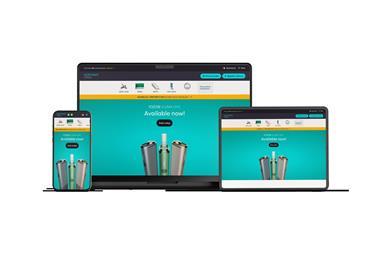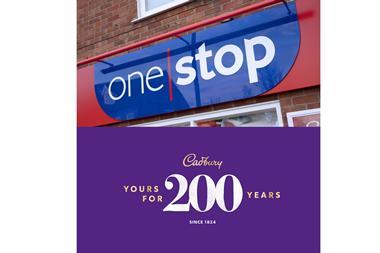Despite tough competition on price, c-stores can win over the crowds at Easter thanks to the trends for luxurious gifts and self-treating
Easter is worth £424m and growing by 7.9%. Shelled eggs have continued to show strong growth over the past two years (up 12%, Nielsen, 12 w/e 15 March 2017) and gifting grew by 7.7% last Easter (Nielsen). But the difficulty that many retailers have with this holiday is working out when to stock Easter products and how many to risk ordering.
Research by Nielsen Scantrack has shown that consumers often leave it to the last minute to buy their chocolate as 50% of sales occur in the final three weeks of the period, making it particularly important for retailers to remain stocked up on gifting chocolate as the season draws to a close.
Chris Pollard, of Barlby Village Stores, in Yorkshire, says it’s for this reason that he has found the run-up to the day quite stressful in the past, as he’s felt like it’s a real gamble.
“You can have three or four hundred Easter eggs out on the shelves for two weeks and you still only start to sell them on Good Friday. When you’ve got all these eggs to shift before Easter Monday you’ve got to have nerves of steel!”
Richard Dance, owner of six Co-op Welcome stores in and around Southampton, explains how easy it can be to get stock levels wrong. He says “We didn’t get it quite right this year. We slightly over-ordered so we’ve slightly scaled it back for next year. The last few days just didn’t really happen, which was a bit disappointing, so we had to reduce quite a lot of prices on the day.”
Richard thinks this is due to the change in Co-op promotion tactics from one year to the next. “In 2016 we did a ‘buy one get one free’ offer on eggs, whereas in 2017 we just did the set price promotion and so we didn’t get the same volume of sales as people chose to buy one instead of two. It’s quite simple if you think about it.”
One thing Richard does know for sure is that mini eggs are sure-fire winners in the run-up to the big day, and so he’s decided to go big on those for 2018.
As has been the pattern in recent years, many c-store retailers are opting to focus more on self-treat lines than shell eggs. Self-treat products grew by 12% in Easter 2017 (Nielsen Scantrack) and drive the majority of growth.
Bep Dhaliwal, trade communications manager for Mars Chocolate, says the self-treat mission is one that retailers can safely stock up early for. She adds that the Malteaster Bunny (rrp 62p, or £2.39 per five pack) is one great self-treat option as it is the nation’s number-two self-treat product (Nielsen Scantrack Easter 2016 vs Easter 2015).
“Easter is on the radar for consumers as early as January so retailers should ensure they are stocked up from December, with particular focus on treat products such as Malteaster Bunny and Galaxy Golden Eggs.”
Tempting treats
Scott Graham of McLeish Inverurie, in Scotland, says that Easter is all about self-treat in his store and says his best seller is usually the Malteaster Bunny singles and sharing packs at 75p and £1.
“We triple-site the self-treat novelties around the store on clip-strips, within confectionery and in dump bins. We go strong on those and they go really well.”
Sid Sidhu, from Sukhi’s Simply Fresh, in Kenilworth, Warwickshire, couldn’t agree more that shoppers will look for any excuse to treat themselves at certain times of the year. He sells a huge number of Cadbury Creme Eggs before Christmas as he likes to make the most of shoppers’ susceptibility to buying self-treats throughout December.
“I’ve ordered £2,000-worth of Cadbury Creme Eggs. Because we buy them in such high volume we get them for cheap and we put them on display from the last week of November.
“The personal consumption of Easter products starts before Christmas. By January shoppers are sick of chocolate and are trying to be healthy so they won’t buy Easter eggs for that month.”
Mondelez sets its sights on a larger share of Easter
Mondelez claims it took a 47% share of the Easter market in 2017 (IRI, Total Market) and was the number one contributor of growth (£20m). For 2018 the firm is unveiling new products and investing £10m in the season.
New and exclusive to the convenience channel will be the ‘Hunt down the white creme egg’ promotion, where consumers who find a white chocolate Creme Egg will win up to £1,000.
Also new is the Cadbury Egg Hunt Super Pack, which provides everything needed to host an Easter egg hunt (rrp £6.99, 342g, eight packs per case).
Maynards Bassetts Jelly Babies will hatch some new chick-shaped jellies. Jelly Babies Chicks will be available in a bag (rrp £1, 165g, 12 packs per case) and a gift-worthy jar (rrp £5.19, 495g, four per case).
Cadbury Dairy Milk will get a new inclusions shell egg range. This comprises premium eggs featuring hidden chunks of favourites such as Daim, which are being marketed as the ideal for younger, affluent shoppers (rrp £12, 570g, four packs per case).
Cadbury Crunchie large shell egg is a new shell egg that is also targeted at the younger shopper (rrp £6.15, 278g, six packs per case).
Sid says there’s a short window of opportunity before all the multiples start selling off their Easter eggs cheaply, too.
“A lot of c-store retailers won’t put out their Easter eggs until February, but I think this is a very competitive time as all the mults have their selections on-shelf with promotions. That’s why I get my Creme eggs on display from the end of November.”
Richard says sales of Creme Eggs changed in 2015 when it was announced the eggs would no longer be made with Dairy Milk.
“We have planned to have a lot of multipacks of Creme Eggs as these have definitely increased in popularity recently as people are choosing to buy these rather than the single eggs.
“People generally are looking for better value wherever they can, but also Creme Eggs had a recipe change and people have been less keen to pay so much for them ever since.”
While some hard-core fans of these famous eggs may have been disappointed by the change in recipe, the popularity of Cadbury Creme eggs cannot be questioned – one Cadbury Creme Egg was sold every 10 seconds during the season in 2017, according to Mondelez.
As is often the case, another major bugbear for c-store retailers is multiples and discounters selling the same Easter products for far lower prices.
Jonathan Summerley, Hancocks purchasing director, says this is a serious issue as value for money is a key motivator early in the Easter season as customers have less time pressure and more freedom of choice. He suggests that retailers pass savings onto customers and clearly display PMPs which help to convey value for money. When it comes to later on in the season retailers can re-focus the range to push the sale of high-value products with greater returns, he says.
Chris says he is fed up of suppliers telling him he has got the best deal possible, only to see deals twice as good in the multiples.
“The thing is, usually you are able to offer two or three eggs for a fiver and suppliers tell you they’ve given you the best deal. Then you see in the multiples that they’re doing five eggs for a fiver or something silly like that. I can’t even buy them for that price!”
Scott agrees and says that it’s for this reason that he doesn’t sell many chocolate shell eggs and instead concentrates on the self-treat lines which he knows will always sell well.
Sid has also opted to leave the medium chocolate eggs to the multiples.
“The supermarkets and the discounters have those eggs on at ridiculous offers and we simply can’t match those so there’s no point trying.”
Rather than competing directly with multiples on medium eggs, Sid concentrates on offering really eye-catching premium gifting options.
“For Easter 2017, we got in really big Easter eggs priced at £10 or £12 because these stand out from the norm and they’re perfect for those shoppers looking to buy a couple of special presents.”
Sid is smart to concentrate on eye-catching premium gifts as 70% of shoppers value quality of chocolate over quantity (Easter Omnibus 2016).
Big spends for top brands
Both the Kinder and Thorntons brands enjoyed a strong performance during the spring period last year. Kinder seasonal is now worth £17m over Easter, making it the fifth biggest brand (Nielsen 29 April 2017). Meanwhile, Thorntons outperformed what was a flat market, growing at 22% (Nielsen, 12 weeks to 16 April 2017).
To capitalise on the desire among consumers to gift loved ones with something unique, Ferrero has developed a personalisation campaign across the Thorntons range. The promotion offers shoppers the chance to win hundreds of personalised gifts including 1,000 chocolate speech bubbles with a personalised message, and three Thorntons Factory experiences.
Activity will be supported by a £2m marketing campaign spanning TV, digital and social media.
The Thorntons range of adult eggs (small and large) is worth £10.7m and was up 8% year on year (Nielsen, 12 w/e 15 April 2017). Thorntons Dessert Eggs experienced double-digit rate of sales growth last year, with Thorntons Chocolate Fudge Brownie up 82% (Nielsen 12 w/e 16 April 2017).
The Dessert Eggs are also available in Lemon Meringue 319g and Thorntons Pecan Pie 329g, and are complemented by four single chocolates.
The Grand Ferrero Rocher – a large milk chocolate & hazelnut shell with individual Ferrero Rocher, wrapped to look like one big Ferrero Rocher – plays into the consumer need for premium products and continues to show momentum, gaining growth of 48% year on year. It is now worth almost £1m at spring (Nielsen, w/e 15 April 2017 vs w/e 26 March 2016).
In addition, Kinder Surprise 100g Pink and Blue Eggs are getting a spring makeover. After experiencing growth at 16% last year (now worth more than £4m) the brand will partner DC Super Friends and Superhero Girls (Nielsen 31 December 2016 vs 29 April 2017). Kinder Surprise will also be hitting TV screens as part of a £2m spring investment.
The middle ground
Richard says the medium eggs have been in a race to the bottom and are no longer considered gift-worthy, but can still be great sellers at the right price.
“The eggs with the mugs have died a death and generally the medium shell eggs, I think, have been reduced in price so much that people don’t even see them as gifting eggs anymore. You can get these medium eggs for £2 so people might buy them as a ‘gesture’ gift, but if they want to buy a proper present then they will get much larger eggs which cost about £10.
“That’s not to say that the medium eggs don’t sell, of course! We still sell a lot of them if they are on a good promotion!”
However, he agrees that more premium products are very popular and picks out Thorntons Harry Hopalot Easter Bunny as being particularly popular with children.
Thorntons will be replacing its Harry Hopalot Milk Chocolate and White Chocolate Eggs with a Milk Chocolate Bunny and a White Chocolate Bunny next Easter, with new packaging in line with Ferrero’s revamped masterbrand colours.
Levi Boorer, Ferrero customer development director, points out that retailers can boost sales of Easter novelties by building excitement around the event through events such as Easter Egg hunts.
He says: “It is important that retailers create as much excitement within their local community, which will not only help translate into sales, but bring in new shoppers. Last Easter saw the return of Ferrero’s Easter Egg Hunt, aimed at driving sales of Kinder Joy. The activity encouraged retailers to offer their local communities their own Easter egg hunts in-store, increasing footfall and driving excitement around the occasion.
“As a result, retailers saw an increase in their Easter sales year on year, as well as increased basket spend compared with the previous week of trading.”
Raaj Chandarana, of Tara’s News, High Wycombe, is one of many retailers who has held an Easter egg hunt with the help of Ferrero. He says this was a huge success.
“For our Easter egg hunt competition, Kinder provided us with a free hamper and £100-worth of vouchers, plus Easter egg hunt kits. We organised that collaboration through its PR team Cirkle PR. Having a supplier help out like that makes the competition feel professional and well organised.”
A Kinder Egg Hunt Kit 185g (rrp £6.99) is also available to consumers for this year.
With Easter 2018 earlier than last year retailers will need to plan ahead to make the most of the sales opportunity. Whether it’s organising an Easter egg hunt, getting treats out early to tempt chocolate fans, or finding the perfectly priced egg line-up, the sooner you start the better.
Stock up on new friends for Easter 2018
Hancocks is introducing Easter Friends for 2018. Available from the end of January, the range features animals and sweet treats wrapped up in pastel colours.
As well as a chunky 500g Easter bunny, there are bags of bunny and chick marshmallows as well as milk chocolate eggs with a cereal filling.
Hancocks purchasing director Jonathan Summerley says retailers need to ensure regularly updated fixtures are located in high-footfall areas for Easter. He adds that store owners can further improve incremental sales by placing products around the store and away from the main fixture, for example on gondola ends.
“Displaying countlines and sharing packs near the tills as well as on gondola ends are sure to increase impulse purchases,” he says.
“Retailers should ensure displays are changed to suit seasonality and should use the opportunity to communicate to their customers exactly what they are planning to sell, and when.”
He adds: “Cross-merchandising is becoming ever-more popular as it can vastly increase impulse purchases and is perfect for creating interesting and engaging displays which also makes it easier for customers to shop.
“Retailers need to ensure products are balanced and not asymmetrical, as consumers tend to take notice of evenly displayed items.”
He points out that it’s good practice to display in groups of three instead of just displaying one item.
“Create a focal point that draws consumers to the display and then keep their attention by catering for as many senses as possible. Taste is a great way to engage customers and measure the popularity of products.”





![PLAUK0125 Jacobs The Trussell Trust Portrait[53]](https://d2dyh47stel7w4.cloudfront.net/Pictures/274x183/6/4/1/322641_plauk0125jacobsthetrusselltrustportrait53_125111_crop.jpg)











![PLAUK0125 Jacobs The Trussell Trust Portrait[53]](https://d2dyh47stel7w4.cloudfront.net/Pictures/380x253/6/4/1/322641_plauk0125jacobsthetrusselltrustportrait53_125111_crop.jpg)









No comments yet